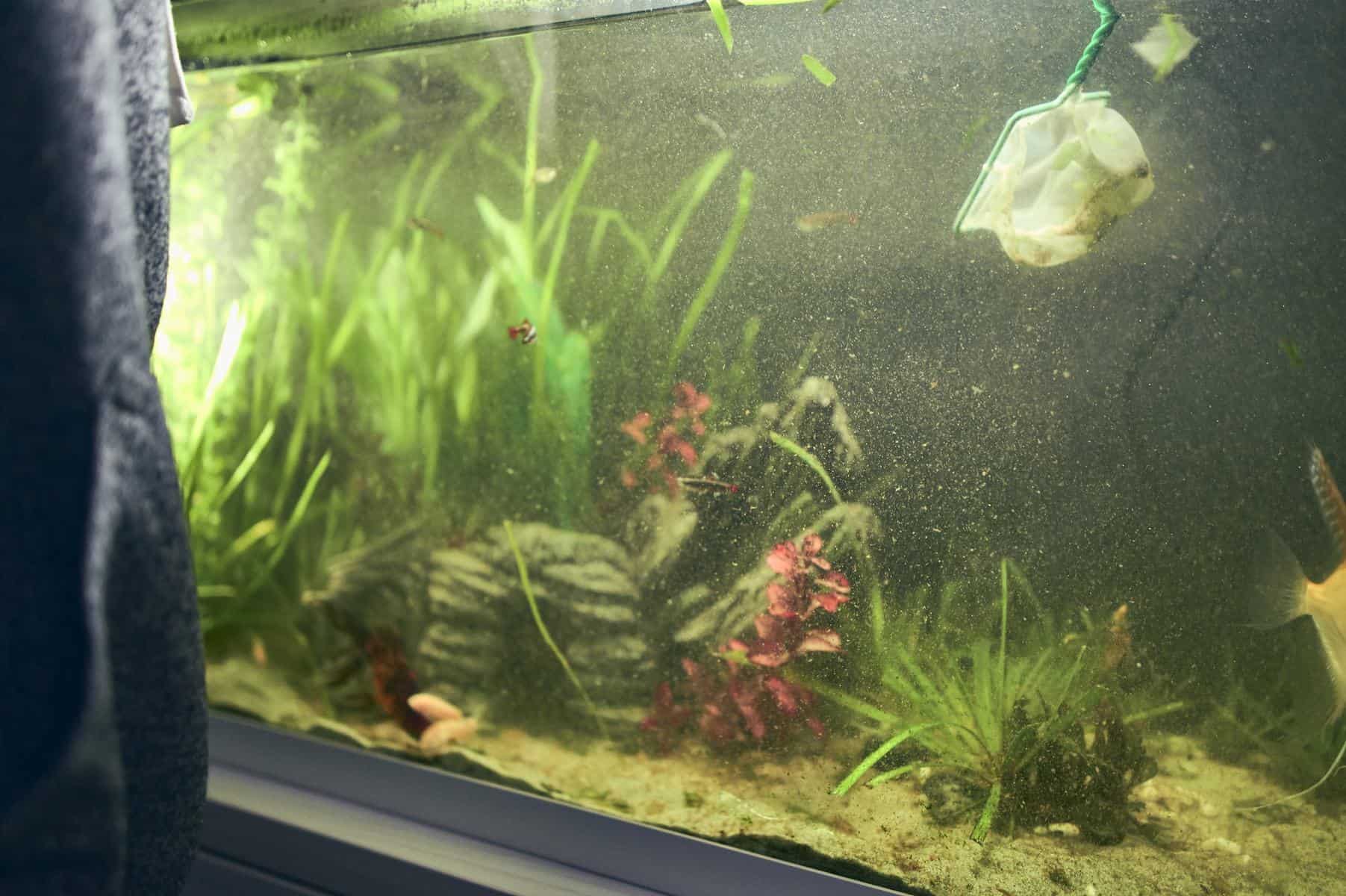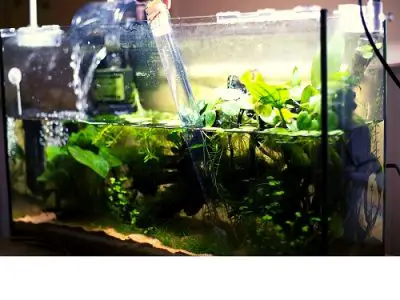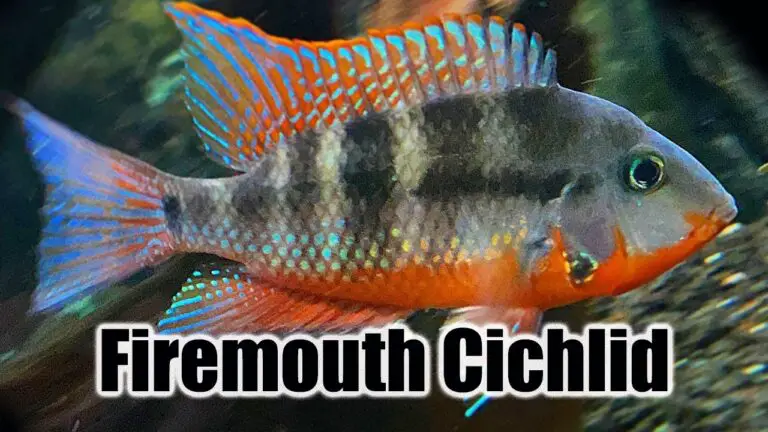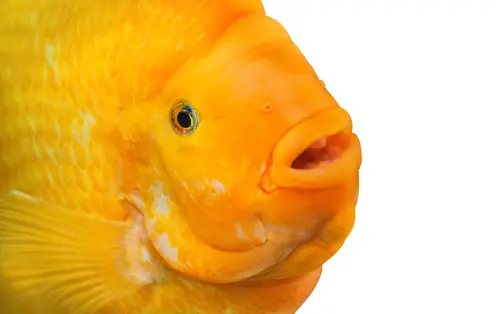What Causes High Nitrate Levels in Fish Tanks?
High nitrate levels in fish tanks are caused by the buildup of waste from fish, overfeeding, and decaying organic matter. When food is eaten or as it decays, ammonia is released into the water which then breaks down into nitrite and finally to nitrate. As more nitrogen enters the tank than can be processed through biological filtration or water changes, these levels increase steadily until they become toxic to inhabitants.
Poorly maintained filters with inadequate biological media will also contribute to increased nitrates in an aquarium since bacteria that consume the excess nitrogen are not present or insufficient. Lastly, overcrowding a tank can lead to high nitrates as there is too much waste for the existing filter’s capacity resulting in poor water quality overall.
High nitrate levels in fish tanks are usually caused by poor water quality, overfeeding of the tank inhabitants, or a build-up of organic matter. Nitrates can occur naturally as fish waste breaks down but can also be introduced to the tank through tap water treatments or fertilizers used in planted aquariums. To combat these high nitrate levels it is important to perform regular water changes and clean the filter media regularly.
Additionally, make sure not to overfeed your fish and keep an eye on any decaying plants or food that could contribute to rising nitrite levels.
Signs of High Nitrates in Aquarium
High nitrate levels in an aquarium can be a sign of poor water quality and can cause health problems for the fish. Signs that your tank may have high nitrates include cloudy or discolored water, frequent algae blooms, slimy surfaces on rocks and décor, and fish displaying signs of stress such as lethargy or lack of appetite. If you suspect that your aquarium has high nitrate levels, it is important to test the water with a quality test kit to confirm the results.
How to Lower Nitrates in Fish Tank Naturally?
One way to naturally lower nitrates in a fish tank is through regular partial water changes. Doing this will help remove some of the built-up nitrogen compounds and replace them with fresh, clean water. It’s important to use a dechlorinator when adding new water, as chlorine can be harmful to your aquatic animals.
Additionally, ensuring that you have adequate filtration and aeration in the tank can help reduce nitrate levels by encouraging beneficial bacteria growth which helps break down organic waste. Finally, adding live plants to your aquarium can also help keep nitrates low as they absorb much of the nutrients from the fish tank and utilize it for their own photosynthesis process.
Safe Nitrate Levels in Aquarium
Maintaining safe nitrate levels in an aquarium is important for the health of the fish and other animals living in it. Nitrates should be kept between 0-20 ppm, although some species may require slightly lower or higher levels depending on their specific needs. Regular water changes are essential to ensure that nitrates remain within these parameters and don’t rise too high as this can lead to algae blooms and other problems.
Additionally, a good filtration system will help keep nitrate levels low by removing organic waste from the tank before it has a chance to break down into nitrates.
How to Correct High Nitrate in Fish Tank?
Nitrate is a common pollutant found in fish tanks, and if left unchecked it can cause health problems for your fish. To reduce the nitrate levels in your tank, you must first identify the source of the problem. Test your water regularly to determine how much nitrate is present in your aquarium and look for any signs of overfeeding or overcrowding that could be contributing to high nitrates.
Once you have identified the source, implement solutions such as performing regular partial water changes, using a protein skimmer to remove organic compounds from the water column, utilizing bacteria-based filtration systems like anaerobic filters or denitrifying reactors that can convert nitrates into harmless nitrogen gas, and increasing aeration in order to increase oxygen levels which will help break down pollutants faster. Taking these steps should help you keep nitrate levels low so that your fish stay healthy and happy!
Chemical to Reduce Nitrates in Aquarium
Nitrates in an aquarium can be reduced by using chemical filtration media, such as activated carbon or denitrifying bacteria. Activated carbon absorbs nitrate molecules from the water and helps to reduce the levels of nitrate present. Denitrifying bacteria breaks down nitrate into nitrogen gas, which is then released out of the aquarium back into the environment.
Both methods are effective at reducing nitrates in an aquarium and should be used together for best results.
How to Lower Nitrates Without Water Change?
One of the most effective ways to lower nitrates without water change is through regular maintenance. This includes removing dead organic matter, such as fish waste and uneaten food, from the tank. Additionally, adding macroalgae like Chaetomorphia can help absorb excess nitrate in the aquarium.
Lastly, performing regular partial water changes can also help reduce nitrate levels over time by diluting nutrients and pollutants present in the tank.
How to Remove Nitrates from Aquarium Water?
Removing nitrates from aquarium water is a must for maintaining healthy fish and plants. Nitrate levels should be kept below 20 ppm, otherwise it can cause stress to the fish and algae growth. The best way to remove nitrates from your aquarium is by using a reverse osmosis filtration system or an ion exchange resin filter.
These filters help to reduce nitrate levels by removing them from the water before they have a chance to accumulate in your tank. Additionally, regular partial water changes are essential in keeping nitrate levels low as they help to flush out any accumulated contaminants that might not be filtered out with the other methods mentioned above.
Nitrate Levels in Saltwater Aquarium
Nitrate is a naturally occurring mineral in saltwater aquariums that is produced by the breakdown of organic matter, such as fish waste and uneaten food. It is an essential nutrient for marine life, but if left unchecked it can accumulate to dangerously high levels which can cause algae blooms, toxicity in fish and corals, and other issues. To keep nitrate at healthy levels in your tank it’s important to perform regular water changes, use adequate filtration systems like protein skimmers or chemical media reactors, avoid overfeeding your fish and monitor levels using test kits.

Credit: www.aquariadise.com
How Do I Lower Nitrates in My Fish Tank?
Lowering nitrates in a fish tank can be achieved through regular water changes and careful monitoring of the aquarium’s environment. Water changes are essential to maintaining healthy levels of nitrate, as they remove accumulated organic waste, uneaten food, and other contaminants that can lead to high nitrate levels. When performing a water change it is important to use dechlorinated or aged tap water since chlorine can kill beneficial bacteria in an aquarium and cause spikes in nitrate.
Additionally, adding live plants to the tank will help keep nitrates down by utilizing them for growth. Furthermore, you should avoid overfeeding your fish as this leads directly to excess nitrogen entering the system which will cause an increase in nitrate concentrations. Finally, regularly test your aquarium’s water parameters so that you can track any increases or decreases in nutrient concentrations like ammonia and nitrite – both of which contribute heavily towards higher levels of toxic nitrogenous wastes like Nitrates.
Can Fish Recover from High Nitrates?
Fish can indeed recover from high nitrates, but the process is not always straightforward. Nitrates are a byproduct of fish waste and other organic matter decaying in an aquarium, so reducing these levels back to a safe range requires addressing both the source of the problem and its symptoms. The first step is to identify what’s causing the nitrate overload – overfeeding, too many fish for your tank size, or poor water circulation could all be factors that need to be addressed.
Once you’ve identified where the issue may lie, it’s important to take steps towards correcting it. This could include changing your feeding regime or doing more frequent partial water changes. You should also make sure you’re using adequate filtration and aeration equipment as well as proper substrate materials such as gravel or sand which can help with keeping nitrate levels low.
Finally, regular testing will ensure you keep tabs on how your fish are faring throughout their recovery period; if you notice any signs of distress (such as lethargy) then consider taking them out for quarantine until they have fully recovered from their ordeal!
What Fish Can Handle High Nitrates?
There are a variety of fish that can handle high nitrate levels in their water. Some of the most popular species include bluegill, largemouth bass, channel catfish, crappie, walleye and yellow perch. These fish can all tolerate high levels of nitrates without any serious health problems or stunted growth.
All these species are hardy and can survive in waters with high concentrations of pollutants like ammonia and nitrates. In addition to being able to withstand higher-than-normal levels of nitrates, these fish also have a good resistance to disease compared to other freshwater species making them great for aquariums. With proper care and maintenance they will thrive even in less than ideal conditions when it comes to water quality so you don’t need to worry about constantly adjusting your tank’s parameters if you choose one or more of these varieties!
Nitrate in Aquariums: What You ACTUALLY Need to Know?
Conclusion
In conclusion, high nitrate levels in fish tanks can be caused by a variety of factors. These include overfeeding, an unbalanced tank environment, inadequate filtration systems, and the presence of decaying organic matter. Taking steps to reduce excess food waste and ensure proper filtration should help keep nitrate levels in check and maintain a healthy aquatic environment for your fish.






